Introduction
Management in today’s fast-paced business world is as much about strategy and leadership as it is about technology. From overseeing teams and coordinating projects to tracking budgets and monitoring performance, managers juggle countless moving parts daily. Trying to do this with pen, paper, or even static spreadsheets is no longer sustainable.
That’s where technology comes in. Management tools powered by digital innovation don’t just save time — they transform how leaders organize, track, and execute. Whether you’re leading a startup team of five or coordinating global operations with thousands of employees, the right tools can streamline workflows, reduce friction, and free managers to focus on higher-level strategy.

This blog explores the essential technology tools that managers use today to streamline operations, empower teams, and achieve better results.
Why Technology is Essential for Streamlined Management
1. Increased Complexity of Work
With distributed teams, multiple projects, and growing compliance requirements, manual oversight has become impossible.
2. Demand for Agility
Markets change quickly. Managers need real-time data and tools to pivot strategies on the fly.
3. Employee Expectations
Teams expect transparency, easy communication, and efficient collaboration — all of which require digital solutions.
4. Competitive Advantage
Organizations leveraging the right tools respond faster, make smarter decisions, and retain talent more effectively.
Categories of Technology Tools for Management
Management tools span multiple categories, each addressing a specific challenge:
- Project Management Platforms – Organize tasks, timelines, and deliverables.
- Communication Tools – Facilitate seamless, real-time interaction.
- Collaboration Platforms – Support teamwork across documents, files, and projects.
- Time and Productivity Tools – Track work hours, efficiency, and focus.
- HR and People Management Tools – Handle recruitment, performance, and employee engagement.
- Finance and Resource Management Tools – Track budgets, invoices, and resource allocation.
- Analytics and Reporting Tools – Turn raw data into insights for better decision-making.
In the first half of this blog, we’ll explore the foundational tools that nearly every manager needs: project management, communication, and collaboration tools.
Project Management Tools: Keeping Teams on Track
Project management platforms are often the backbone of streamlined management. They replace scattered spreadsheets and endless email threads with centralized dashboards.
Key Features
- Task Assignment: Assign tasks with due dates, owners, and dependencies.
- Timelines & Gantt Charts: Visualize progress across projects.
- Kanban Boards: Track tasks through stages of completion.
- Automation: Set up recurring tasks, reminders, and workflow triggers.
- Integrations: Connect with tools like Slack, Google Workspace, or GitHub.
Popular Tools
- Asana: Flexible project management with customizable workflows.
- Trello: Simple, visual Kanban-based boards for smaller teams.
- Jira: Preferred for software development with agile boards and sprint planning.
- Monday.com: Combines project tracking with automation and analytics.
- ClickUp: An all-in-one platform offering docs, tasks, goals, and dashboards.
Example Use Case
A marketing team uses Asana to plan a product launch. Tasks are broken into content creation, design, PR outreach, and campaign execution. Automated reminders keep everyone on schedule, while dashboards show real-time progress.
Impact: Reduced confusion, fewer missed deadlines, and improved accountability.
Communication Tools: Enhancing Team Connectivity
Communication is at the heart of management. Without clear, effective channels, even the best strategies fall apart.
Why They Matter
- Reduce email overload.
- Foster collaboration in remote or hybrid teams.
- Ensure quick decision-making.
Key Features
- Instant Messaging: Real-time text communication with channels or groups.
- Voice & Video Calls: For meetings, brainstorming, and remote collaboration.
- File Sharing: Quick exchange of files and documents.
- Searchable Archives: Keep a record of conversations and decisions.
- Integrations: Connect with calendars, project management, and file storage systems.
Popular Tools
- Slack: Centralized messaging with powerful integrations.
- Microsoft Teams: Chat, video, and Office 365 integration.
- Zoom: Widely used for video meetings and webinars.
- Google Chat/Meet: Seamlessly integrated with Google Workspace.
Example Use Case
A remote software team uses Slack channels for daily communication, Teams for scheduled video meetings, and integrates Jira updates directly into chat.
Impact: Faster decisions, reduced miscommunication, and stronger team cohesion despite physical distance.
Collaboration Tools: Building Together, Anywhere
Collaboration goes beyond communication. These tools let teams actively work on shared documents, designs, and assets in real time.
Why They Matter
- Enable remote and hybrid teams to collaborate as if in the same room.
- Eliminate version control chaos (“final_v7_revised.docx”).
- Accelerate creative and operational workflows.
Key Features
- Real-Time Editing: Multiple users work on the same document simultaneously.
- Commenting & Feedback: In-line comments and review tools.
- Version History: Track changes and revert if needed.
- File Sharing & Storage: Central repositories for easy access.
- Permissions & Security: Control access at document or folder levels.
Popular Tools
- Google Workspace (Docs, Sheets, Drive): Real-time document collaboration.
- Microsoft 365 (Word, Excel, OneDrive): Enterprise-ready document and collaboration suite.
- Notion: Combines notes, wikis, databases, and tasks.
- Dropbox Paper: Simple collaborative document editing.
- Miro: Visual collaboration and whiteboarding tool.
Example Use Case
A product team uses Google Docs to draft specifications, Figma to collaborate on design mockups, and Miro for brainstorming sessions.
Impact: Faster ideation, smoother handoffs between teams, and improved innovation.
Time and Productivity Tools: Managing Focus and Efficiency
Even with the best project and communication platforms, teams need systems to manage time, prioritize tasks, and track productivity.

Why They Matter
- Help managers understand how time is spent.
- Provide accountability for distributed teams.
- Reduce burnout by ensuring workloads are balanced.
Key Features
- Time tracking with automated or manual entry.
- Productivity analytics (hours logged, task completion rates).
- Pomodoro timers and focus modes.
- Integration with project management systems.
Popular Tools
- Toggl Track: Simple time tracking with powerful reporting.
- RescueTime: Monitors application and website usage for productivity insights.
- Clockify: Free time-tracking app with unlimited users.
- Focus@Will: AI-driven music to improve focus and reduce distractions.
Example Use Case
A consulting firm uses Toggl Track to log billable hours per client project. Reports sync directly into QuickBooks for invoicing.
Impact: Increased billing accuracy, improved client trust, and better workload forecasting.
HR and People Management Tools: Empowering Teams
Managing people is one of the most critical — and complex — aspects of leadership. HR and people management tools simplify recruitment, performance, and employee engagement.
Why They Matter
- Streamline hiring and onboarding.
- Support performance reviews and continuous feedback.
- Centralize employee data securely.
Key Features
- Applicant tracking systems (ATS).
- Digital onboarding workflows.
- Performance management dashboards.
- Payroll and benefits management.
- Employee engagement surveys.
Popular Tools
- BambooHR: All-in-one HR software for SMBs.
- Workday: Enterprise-grade HR, payroll, and analytics.
- Gusto: Payroll, benefits, and HR support for small businesses.
- Lever: Applicant tracking and recruitment platform.
- 15Five: Focused on performance reviews and employee engagement.
Example Use Case
An SMB uses BambooHR to centralize employee records, automate leave requests, and run quarterly performance reviews.
Impact: Reduced HR admin time, improved employee satisfaction, and better retention rates.
Finance and Resource Management Tools: Keeping Budgets in Check
Managers are not only responsible for people and projects but also for ensuring budgets and resources are properly allocated.
Why They Matter
- Prevent overspending.
- Provide visibility into financial health.
- Align financial planning with strategic goals.
Key Features
- Budgeting and forecasting.
- Expense tracking and approvals.
- Invoice management.
- Resource allocation for projects.
- Integration with accounting systems.
Popular Tools
- QuickBooks: Accounting and financial management for SMBs.
- Xero: Cloud-based accounting with strong integrations.
- Expensify: Automates expense reporting and reimbursements.
- Float: Real-time cash flow forecasting.
- SAP Concur: Enterprise expense and travel management.
Example Use Case
A digital agency uses QuickBooks for invoicing, Expensify for employee expense reports, and integrates both with Asana project budgets.
Impact: Fewer financial errors, streamlined reporting, and improved profitability tracking.
Analytics and Reporting Tools: Turning Data into Decisions
Modern management is data-driven. Analytics and reporting tools help managers make informed decisions instead of relying on gut instinct.
Why They Matter
- Provide real-time visibility into KPIs.
- Enable proactive, not reactive, decision-making.
- Create transparency across teams and stakeholders.
Key Features
- Custom dashboards.
- KPI tracking across functions (sales, marketing, HR).
- Data visualization tools (charts, graphs, heatmaps).
- Predictive analytics.
Popular Tools
- Tableau: Advanced data visualization and analytics.
- Power BI: Microsoft’s business intelligence tool.
- Google Data Studio (Looker Studio): Free, easy-to-use reporting platform.
- Domo: Cloud-based business intelligence with wide integrations.
- Klipfolio: Dashboard and KPI monitoring.
Example Use Case
A SaaS startup integrates Power BI with HubSpot, Jira, and Stripe to build a dashboard tracking customer acquisition costs, churn, and revenue.
Impact: Leadership makes data-backed decisions, reducing churn and increasing profitability.
Advanced Integrations: Building a Seamless Ecosystem
The true power of technology lies not just in individual tools but in how they work together.

Common Integrations
- Slack + Asana/Jira: Project updates piped directly into chat.
- Zoom + Calendly + Google Calendar: Automated scheduling and meeting setup.
- QuickBooks + Toggl Track: Billable hours flow directly into invoices.
- Zapier/Make (formerly Integromat): Connects hundreds of apps for workflow automation.
Benefits
- Reduced context-switching between apps.
- Elimination of duplicate data entry.
- Creation of “single sources of truth.”
Challenges in Using Technology Tools for Management
1. Tool Overload
Too many platforms create confusion and inefficiency.
2. Adoption Resistance
Employees may resist learning new systems without clear training and incentives.
3. Integration Issues
Not all tools integrate smoothly, leading to data silos.
4. Cost Management
Licensing fees add up quickly across multiple tools.
5. Security Concerns
More tools mean more endpoints and higher risk of data breaches.
Real-World Case Studies
Case Study 1: Startup Scaling with Integrated Tools
A 20-person SaaS startup adopted Slack, Notion, Asana, and QuickBooks. By integrating these tools:
- Daily standups happened in Slack.
- Knowledge base lived in Notion.
- Projects tracked in Asana.
- Finances managed in QuickBooks.
Result: Productivity increased by 30%, and onboarding time for new hires dropped by half.
Case Study 2: Global Enterprise Optimizing Resource Management
A multinational used Workday for HR, SAP Concur for expenses, and Tableau for analytics.
Result: Leadership gained visibility into global workforce costs, reducing redundant spending by millions annually.
Case Study 3: Nonprofit Streamlining Collaboration
A nonprofit used Google Workspace and Trello for collaboration and project tracking.
Result: Volunteers worked seamlessly across countries, cutting project delivery time by 25%.
Conclusion
Streamlining management isn’t about adopting every tool available. It’s about choosing the right mix of platforms that align with your organization’s goals, workflows, and culture.

From project management and communication to HR, finance, and analytics, today’s technology empowers managers to handle complexity with confidence. When integrated effectively, these tools don’t just save time — they transform management into a more transparent, efficient, and data-driven practice.
FAQs
1. What’s the most important tool for managers?
It depends on the organization, but project management and communication tools are usually the foundation.
2. How do I avoid tool overload?
Audit your current stack, eliminate redundant apps, and consolidate where possible.
3. Are free tools effective for management?
Yes. Platforms like Trello, Google Workspace, and Clockify offer strong free versions for small teams.
4. How can I increase adoption of new tools?
Provide training, explain the benefits, and integrate tools into daily workflows.
5. Can small businesses benefit from enterprise tools?
Usually no — SMBs should start with lightweight, affordable tools and scale into enterprise solutions as needed.
6. What’s the biggest risk of using too many management tools?
Data silos and wasted time switching between platforms.

